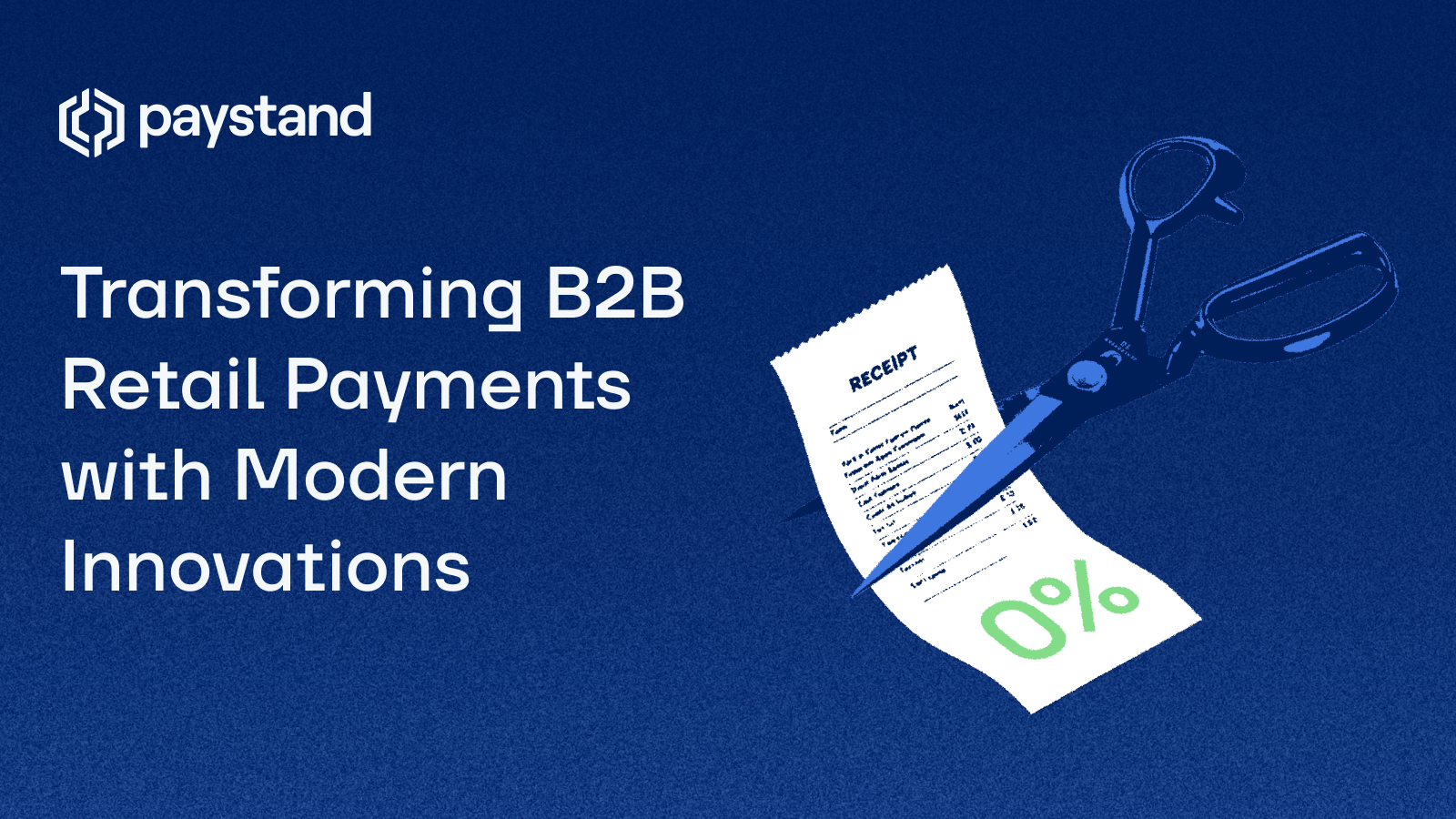Transforming B2B Retail Payments with Modern Innovations

Table of Contents
- Digital Payments in B2B Retail Environments
- Mobile and Contactless Solutions for Business Buyers
- Embedded Finance and B2B Payment Automation
- Reducing Credit Card Dependence in Wholesale Transactions
- Blockchain and Real-Time Payment Innovations
- Meeting the Expectations of Modern Business Buyers
Key Takeaways
- B2B payment methods in retail are evolving through automation, embedded finance, and blockchain.
- Distributors and wholesalers are adopting digital infrastructure to streamline AR and reduce Days Sales Outstanding (DSO).
- Moving away from credit card reliance helps lower costs and increase transparency.
- Real-time payments and digital rails are improving cash flow and financial control for B2B businesses.
Retailers and distributors are under increasing pressure to modernize how they send and receive payments. For B2B organizations, payments are no longer just a back-office function—they're strategic tools that can influence cash flow, customer retention, and scalability. As technology advances, the B2B payment experience is being redefined to meet the growing demand for speed, transparency, and operational agility.
Digital Payments in B2B Retail Environments
While much attention is given to consumer-facing retail payments, digital innovation is transforming B2B transactions as well. In physical wholesale showrooms or at trade counters, distributors are replacing paper checks and in-person invoicing with digital options like ACH, embedded bank payments, and secure links. These solutions reduce manual processing, lower fraud risk, and align payment practices with real-time business needs.
Mobile and Contactless Solutions for Business Buyers
Mobile payments are expanding beyond consumer applications. Distributors and wholesalers are now leveraging mobile invoicing and QR code payments to simplify the B2B payment experience. Sales reps can send invoices directly from mobile devices, and business buyers can pay on the spot using mobile wallets or direct bank transfers. This streamlines order-to-cash cycles and accelerates working capital.
Embedded Finance and B2B Payment Automation
Embedded finance is enabling distributors to integrate financing options and automated payment workflows directly into their platforms. This includes features like net terms automation, recurring billing, and real-time payment visibility. Automating the accounts receivable process helps eliminate errors, reduce manual workloads, and improve DSO. Learn more in our B2B Payment Trends and B2B Payments blogs.
Reducing Credit Card Dependence in Wholesale Transactions
Credit cards remain costly and inefficient for high-volume B2B transactions. Distributors are turning to alternatives like ACH, RTP (Real-Time Payments), and blockchain-based payment rails to reduce fees and speed up cash application. These alternatives also mitigate chargebacks and settlement delays, providing better financial predictability. Learn how this ties into the Future of Finance.
Blockchain and Real-Time Payment Innovations
Blockchain and real-time payment infrastructure are redefining how B2B businesses transact. These technologies ensure secure, immutable records, eliminate intermediaries, and enable immediate fund settlement. For B2B retailers and suppliers, this translates to fewer disputes, lower risk, and enhanced control over the full payment lifecycle.
Meeting the Expectations of Modern Business Buyers
Today’s business buyers expect consumer-like experiences when it comes to payments. This includes flexible options, instant confirmations, and easy-to-navigate portals. Distributors that offer a wide range of digital payment methods, including autopay, virtual cards, and embedded bank payments, are more likely to retain B2B customers and scale faster.
The Future of B2B Retail Payments
The B2B retail payment landscape is moving toward frictionless, automated, and embedded experiences. Distributors and wholesalers who invest in digital payment infrastructure can enhance cash flow, reduce overhead, and strengthen customer relationships. As digital transformation accelerates, aligning with innovations in digital payments is no longer optional—it's a critical part of staying competitive.
Distributors looking to future-proof their payment systems must embrace automation, real-time capabilities, and the elimination of legacy tools like checks and manual reconciliation.
Ready to get paid faster and lower your costs? Discover how Penntek doubled its payment efficiency and saved $65K in just six months.






%20(1)%20(1).jpg?width=100&height=100&name=IMG_3752%20(1)%20(1)%20(1).jpg)